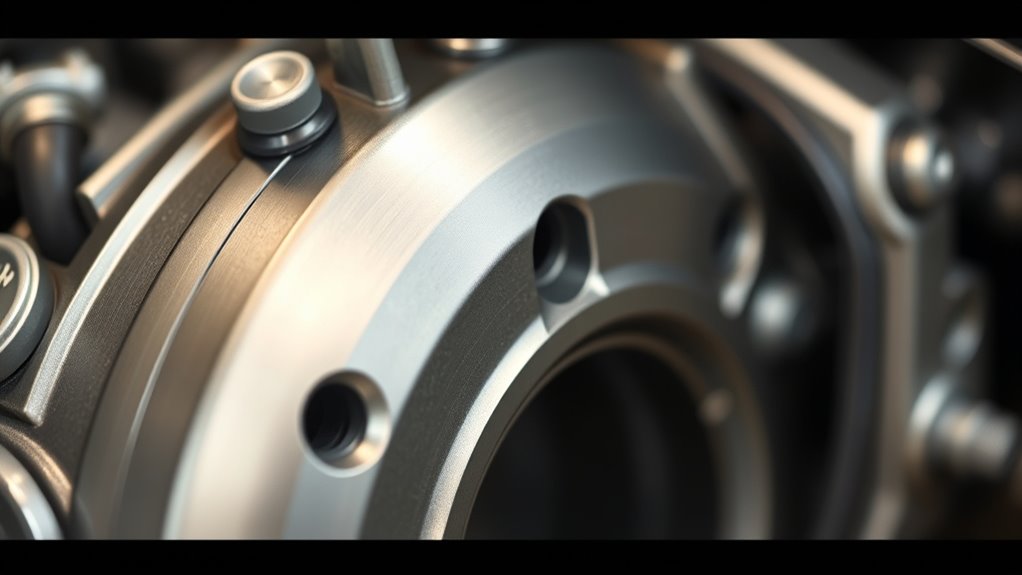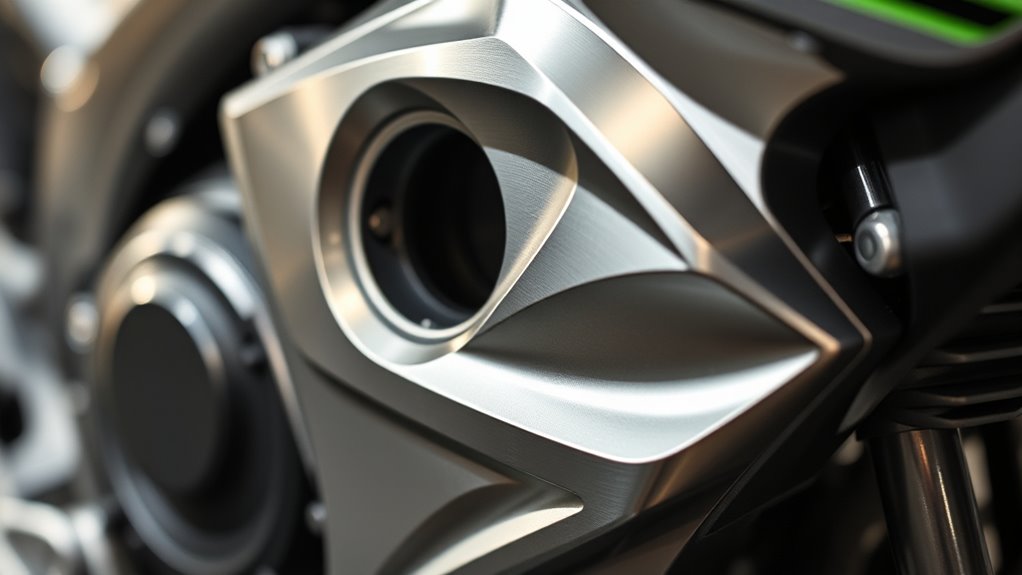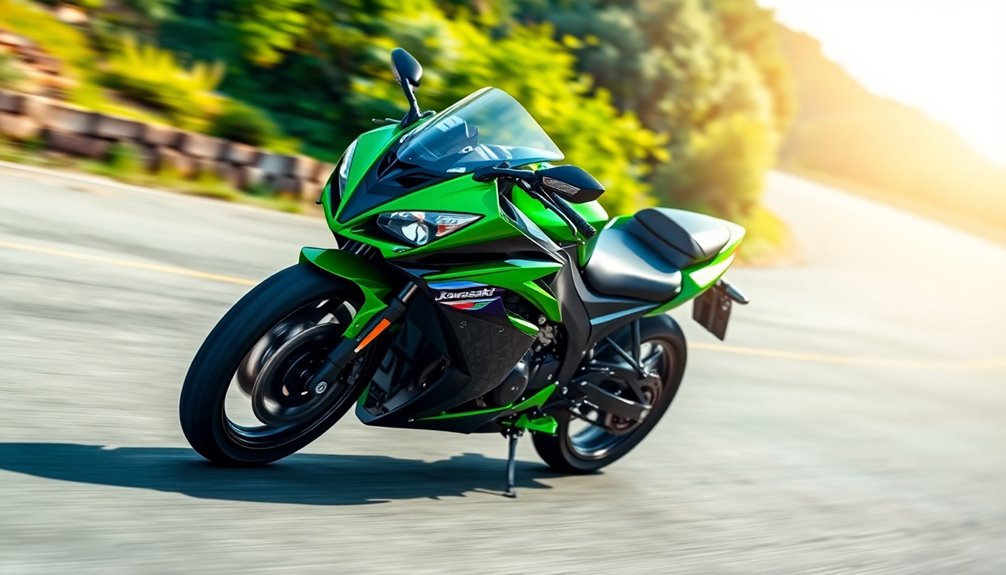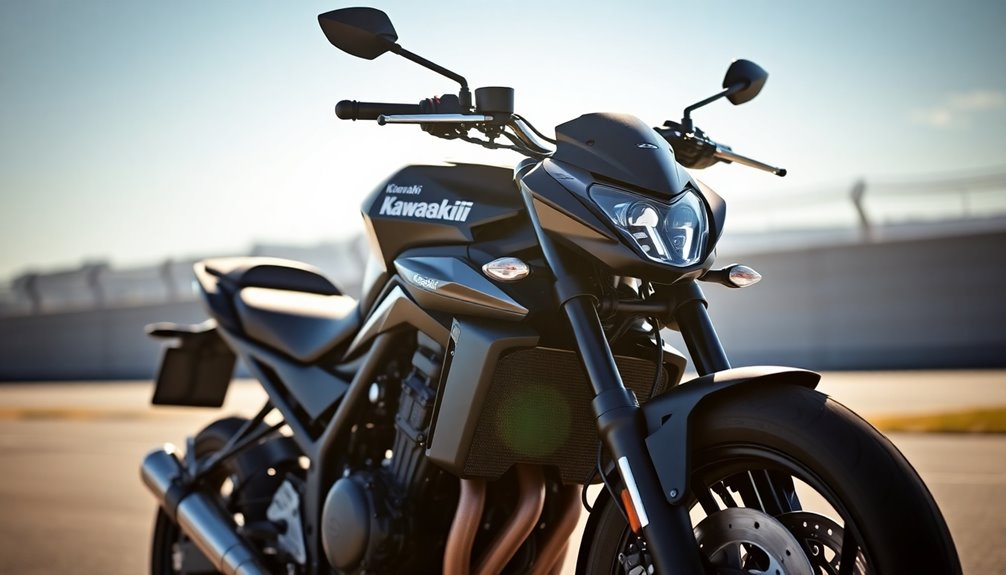Kawasaki’s crankcase venting system is designed to prevent pressure buildup and oil leaks by directing blow-by gases through oil separators and filters. You’ll find hoses, valves, and other components that need regular inspection and maintenance to keep the system working effectively. Proper venting helps protect engine performance, reduces wear, and meets emission standards. Keep an eye on these parts, and you’ll guarantee your engine stays healthy—there’s more to understand if you continue exploring.
Key Takeaways
- Proper venting maintains engine performance and prevents pressure buildup inside the crankcase.
- Oil separators trap oil droplets, ensuring cleaner crankcase conditions and reducing oil consumption.
- Regular inspection and maintenance of hoses, valves, and filters prevent blockages and system failures.
- The design directs gases through separators to meet emission regulations and minimize environmental impact.
- Properly maintained venting systems extend engine longevity and reduce the risk of gasket failures.

Proper crankcase venting is essential for maintaining your Kawasaki engine’s performance and longevity. When your engine runs, it generates blow-by gases that contain combustion byproducts, including unburned fuel, oil vapors, and other contaminants. If these gases aren’t properly vented, they can cause pressure buildup inside the crankcase, leading to oil leaks, seal failures, and increased engine wear. Kawasaki’s design emphasizes an effective ventilation system that ensures these gases are safely managed, preventing damage and helping your engine run smoothly.
Proper crankcase venting prevents pressure buildup and engine wear, ensuring reliable Kawasaki performance.
A key component of this system is oil separation. As blow-by gases travel through the venting pathway, they carry tiny oil droplets that can otherwise clog or foul the ventilation routes. Kawasaki’s ventilation system incorporates oil separators that trap these droplets, allowing only clean gases to escape. This process not only maintains cleaner crankcase conditions but also reduces oil consumption and prevents the build-up of sludge. By effectively separating oil from the gases, the system preserves oil quality and ensures proper lubrication over time, which is vital for engine durability.
You’ll find that Kawasaki’s crankcase venting is carefully designed to minimize pressure within the engine while preventing contaminants from entering. The ventilation system typically includes hoses, valves, and filters strategically placed to optimize gas flow. You should regularly inspect these components for blockages or damage, as clogged or broken parts can compromise the system’s efficiency. Proper maintenance of the venting system helps prevent pressure buildup, which could otherwise lead to gasket failures or oil leaks, ultimately safeguarding your engine’s integrity.
In addition, Kawasaki’s approach to crankcase venting considers the environmental impact by reducing emissions of unburned hydrocarbons. The venting system directs gases through oil separators and filters before releasing them into the atmosphere, meeting strict emission standards. When functioning correctly, this system ensures your engine remains compliant with regulations and operates with minimal environmental footprint. Moreover, using high-quality venting components can further enhance system reliability and longevity.
To keep your Kawasaki engine performing at its best, you should pay close attention to the venting system’s condition. Regularly check hoses for cracks or wear, clean or replace filters as needed, and ensure oil separators are functioning properly. Doing so maintains optimal oil separation, prevents pressure issues, and prolongs engine life. Proper crankcase venting isn’t just about emissions; it’s a critical aspect of engine health, helping you avoid costly repairs and ensuring your Kawasaki runs reliably mile after mile.
Frequently Asked Questions
How Often Should I Inspect My Kawasaki Crankcase Vent System?
You should inspect your Kawasaki crankcase vent system as part of your regular maintenance schedule, ideally every 3,000 to 5,000 miles or at least once a year. During these inspections, check for any signs of clogging, leaks, or damage. Regular inspection guarantees proper crankcase ventilation, helps prevent engine issues, and keeps your bike running smoothly. Stay proactive with your maintenance schedule to avoid costly repairs down the line.
Can Aftermarket Vent Kits Improve Engine Performance?
Think of aftermarket vent kits as giving your engine a gust of fresh air; they can boost performance gains when installed properly. Vent kit installation often improves crankcase ventilation, reducing pressure and keeping contaminants out. While they won’t turn your bike into a race machine overnight, improved venting helps your engine run smoother and more efficiently. If you want to release extra power, upgrading your vent system might be just what you need.
What Are Common Signs of Crankcase Vent System Failure?
You might notice oil leaks around the engine or abnormal noises, like hissing or whistling, which indicate crankcase vent system failure. These signs occur because pressure builds up, forcing oil past seals or creating loud sounds. If you observe these issues, it’s essential to check the vent system promptly. Regular maintenance helps prevent further damage, ensuring your engine runs smoothly and efficiently.
How Does Crankcase Venting Affect Emissions Compliance?
You influence emissions compliance through crankcase venting because a properly functioning system helps meet emission standards by controlling crankcase vapors. When venting works correctly, it reduces harmful emissions and minimizes environmental impact. If it fails, excess vapors escape, increasing pollution and risking non-compliance with regulations. Ensuring your crankcase vent system is in good shape is essential for staying environmentally responsible and adhering to emission standards.
Are There Specific Kawasaki Models With Unique Venting Requirements?
Did you know that some Kawasaki models, like the Ninja ZX series, have unique venting requirements? You need to pay attention to model-specific venting guidelines because Kawasaki variations can influence emissions and performance. For example, certain models require specialized crankcase venting components to meet regulations. Always check your model’s manual or consult a Kawasaki technician to guarantee proper venting and compliance, preventing potential issues down the road.
Conclusion
So, next time you marvel at Kawasaki’s crankcase venting, remember it’s all about those tiny breathers working tirelessly behind the scenes. Who knew that venting fumes could be such a sophisticated ballet of engineering elegance? Clearly, Kawasaki’s design proves that even the simplest task—venting—can be elevated to an art form. So go ahead, admire the subtle genius of your bike’s breathy secret, because nothing screams sophistication quite like a well-vented engine.









